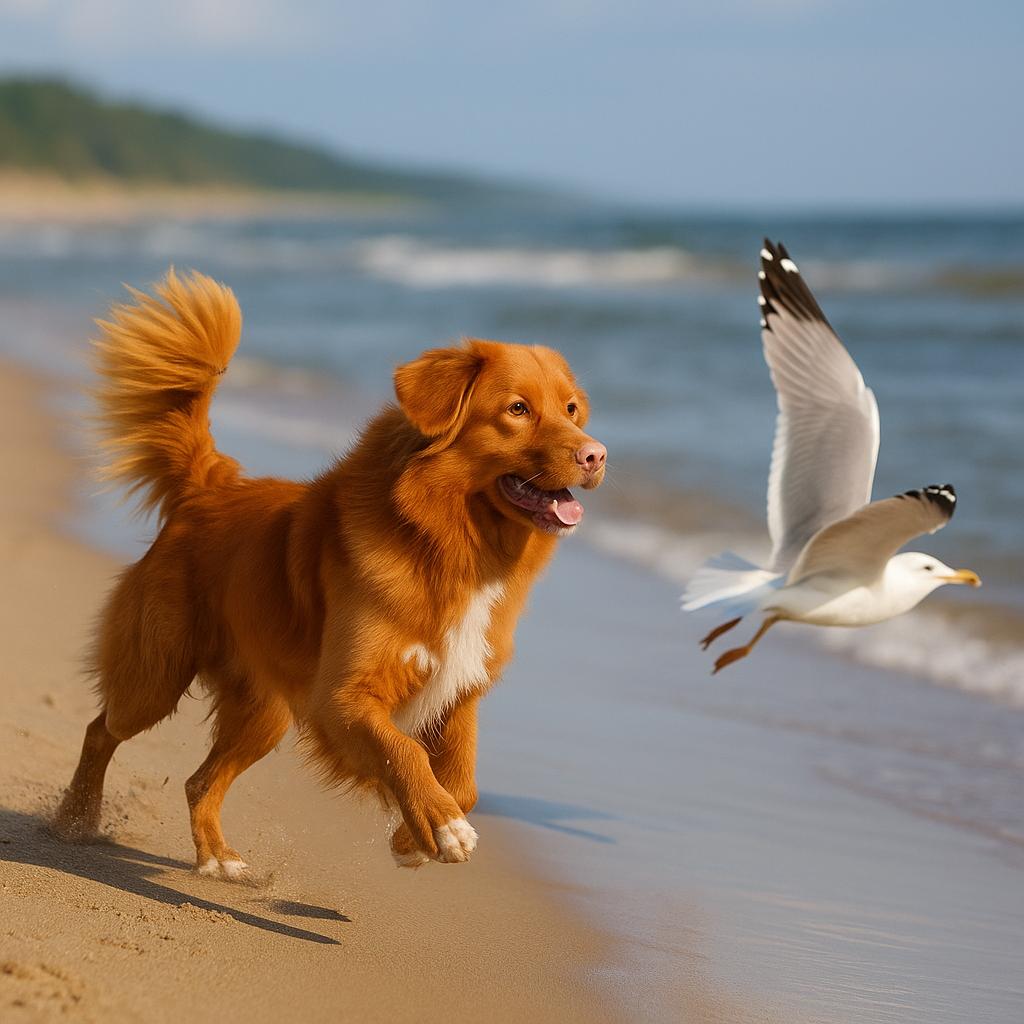
Nova Scotia Duck Tolling Retriever: Keen Retriever
The Nova Scotia Duck Tolling Retriever dog breed first developed in the community of Little River Harbour, in Yarmouth County, Nova Scotia, Canada, around 1880, but was then perfected in the second half of the 20th century.
In this eastern province of the country, on the northern coast of the Atlantic Ocean, wild ducks pass through every year during their migration. Since ancient times, the inhabitants had specialised in using dogs for duck hunting. This was derived from observing foxes, which attracted the birds by playing on the shore. Once they landed, the ducks were taken by surprise by other foxes hiding nearby. This led to the need for a versatile dog, specialised in retrieving, even in water, which would play near the waterways to scare the ducks and chase them towards the hunter.
To create this breed, various types of hunting and retrieving dogs belonging to the retriever, setter and collie families were crossed with the aim of creating a new medium-sized dog with the characteristics I listed above.
This breed is very popular in Canada and the United States, so much so that it has been declared the representative breed of the Canadian province of Nova Scotia. In recent years, it has also become quite widespread in northern and central Europe, mainly in Scandinavia, Belgium and the Netherlands. In the rest of the world, it is an almost unknown breed.
This dog is also excellent as a search dog for missing persons or under rubble. It has a very keen sense of smell, is very intelligent and eager to work.
Character of the Nova Scotia Duck Tolling Retriever dog breed

It has a significant relationship with water; it never misses an opportunity to dive in, and for this reason, anything will do, from a stream to the sea, but even a dirty ditch will suffice. It loves to fetch, and this should be an important part of its daily exercise.
As far as training is concerned, it is necessary to socialise him from an early age, as he can be reserved with strangers and even with other dogs. He may have problems with cats and small pets, as his instinct is to chase prey. Living with cats may be possible if socialisation takes place when the Toller is still a puppy.
It is always eager to work and has therefore quickly established itself as a very popular breed in dog sports such as obedience, tracking and agility. It is not a dog that can be left alone for many hours, as it tends to get bored and can become destructive with furniture and things left lying around.
Appearance of the Nova Scotia Duck Tolling Retriever dog breed

The head is slightly wedge-shaped: the skull is broad and slightly rounded, while the cheeks are flat. The ears are triangular in shape, medium in size and set high. The hair on the back of the ears is fringed, while on the tips, which are slightly rounded, it is short. The tail also has abundant fringes.
Like almost all retrievers, the Tolling also has a dense, double, waterproof undercoat. It is wavy on the back but straight on the other parts of the body. The top coat is soft and long, sometimes curly on the throat, but always pleasant to the touch. The coat colours range from red to orange in all shades. Sometimes the fringes and the underside of the tail are lighter in colour.
Care and health of the Nova Scotia Duck Tolling Retriever breed

Its average life expectancy is around 14 years.
As for coat care, it does not need much attention. Simply brush the coat once a week and, to avoid damaging its natural protection, only bathe when really necessary. It may be necessary to trim the hair on the legs, which is often long, especially in winter, when snow and ice can become trapped and cause discomfort. It tolerates the cold very well and is capable of swimming in icy water, but does not cope as well with the heat.
Like all retrievers, if it does not get enough exercise, it tends to put on weight.









